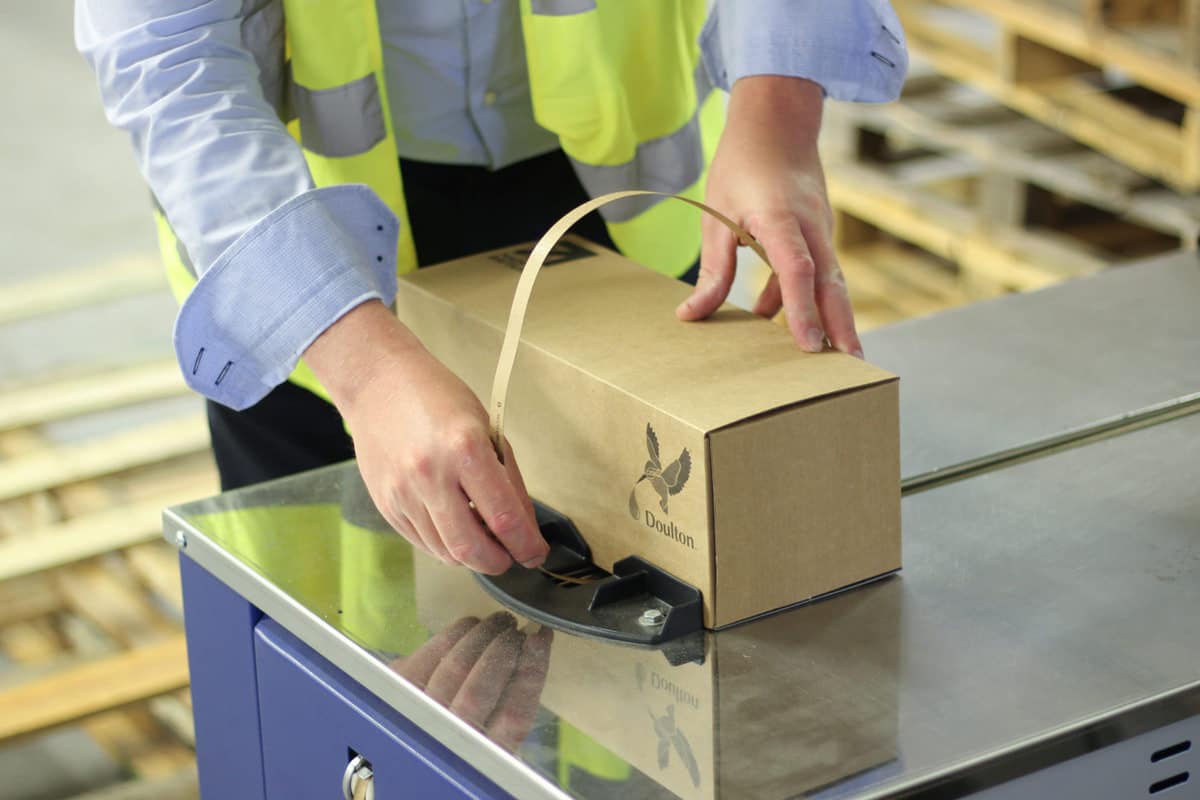In today’s fast-paced world of logistics and manufacturing, efficient and reliable packaging is paramount. Ensuring your products arrive at their destination safely and intact is crucial for customer satisfaction and business success. This is where strapping machines come into play, offering a robust and cost-effective solution for securing packages of all shapes and sizes. This blog post will delve into the world of strapping machines, exploring their types, benefits, and applications, providing you with a comprehensive understanding of this essential packaging technology.
What are Strapping Machines?
Strapping machines are automated or semi-automated devices designed to apply tensioned strapping material around packages, bundles, or pallets. This strapping, typically made of steel, polypropylene (PP), or polyester (PET), creates a tight seal that keeps items secure during storage and transportation. These machines significantly improve packaging efficiency compared to manual strapping methods, offering consistent tension, faster processing times, and reduced labor costs.
Types of Strapping Machines:
Strapping machines come in various configurations to cater to different packaging needs. The most common types include:
- Manual Strapping Tools: These are the most basic and portable option, relying on manual effort to tension and seal the strapping. While cost-effective for low-volume applications, they can be labor-intensive and inconsistent.
- Semi-Automatic Strapping Machines: These machines automate the tensioning and sealing process, requiring the operator to manually place the strapping around the package. They offer a good balance of speed and affordability for medium-volume operations.
- Automatic Strapping Machines: These are fully automated systems that require minimal operator intervention. They automatically feed, tension, seal, and cut the strapping, making them ideal for high-volume production lines. They can be integrated into conveyor systems for seamless packaging.
- Arch Strapping Machines: These machines feature an arch through which the package is passed. The strapping is then applied around the package within the arch. They are commonly used for bundling smaller items or securing cartons.
- Table Top Strapping Machines: These are compact machines designed for tabletop use. They are suitable for smaller businesses or operations with limited space.
Strapping Materials:
The choice of strapping material depends on the application and the weight and nature of the package. Common materials include:
- Steel Strapping: Known for its high tensile strength, steel strapping is ideal for heavy-duty applications, such as securing metal products, lumber, and heavy machinery.
- Polypropylene (PP) Strapping: This is a cost-effective option for light to medium-duty applications. It offers good flexibility and is suitable for bundling cartons, newspapers, and other lightweight items.
- Polyester (PET) Strapping: This is a strong and durable plastic strapping that offers excellent tension retention and is resistant to moisture and UV damage. It is a popular alternative to steel strapping for many applications.
Benefits of Using Strapping Machines:
Investing in strapping machines offers numerous advantages for businesses:
- Increased Efficiency: Strapping machines significantly speed up the packaging process compared to manual methods, leading to higher throughput and reduced labor costs.
- Consistent Tension: Machines apply consistent tension to the strapping, ensuring secure packaging and minimizing the risk of damage during transportation.
- Improved Package Security: Properly applied strapping provides superior package security, reducing the likelihood of tampering, pilferage, and damage during shipping.
- Reduced Material Waste: Strapping machines optimize the use of strapping material, minimizing waste and reducing packaging costs.
- Enhanced Presentation: Neat and consistent strapping improves the overall presentation of packages, enhancing brand image and professionalism.
- Worker Safety: Automated strapping machines reduce the risk of repetitive strain injuries associated with manual strapping methods.
Applications of Strapping Machines:
Strapping machines are used across a wide range of industries, including:
- Manufacturing: Securing finished goods for storage and shipment.
- Logistics and Warehousing: Bundling and palletizing goods for efficient handling and transportation.
- Printing and Publishing: Bundling newspapers, magazines, and other printed materials.
- Food and Beverage: Securing cases of beverages, canned goods, and other food products.
- Construction: Bundling lumber, pipes, and other building materials.
Choosing the Right Strapping Machine:
Selecting the right strapping machine depends on several factors, including:
- Volume of Packaging: High-volume operations require automatic machines, while low to medium-volume operations can benefit from semi-automatic or manual options.
- Size and Weight of Packages: The size and weight of packages will determine the type of strapping machine and the appropriate strapping material.
- Budget: The budget available for purchasing and maintaining the machine.
- Integration with Existing Systems: The ability to integrate the strapping machine with existing conveyor systems or other packaging equipment.
Conclusion:
Strapping machines are essential tools for businesses looking to improve packaging efficiency, enhance package security, and reduce costs. By understanding the different types of machines, strapping materials, and their applications, businesses can make informed decisions and invest in the right strapping solution to meet their specific needs. Whether you’re shipping small parcels or large pallets, strapping machines provide a reliable and cost-effective way to secure your shipments and ensure they arrive at their destination safely and intact. By considering the factors outlined in this guide, you can confidently choose a strapping machine that optimizes your packaging process and contributes to your overall business success.





























